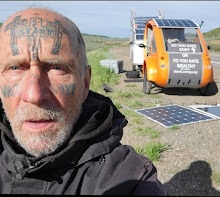
(NEWSCOM)
New US office takes fresh approach to carbon
One possibility: Industrial emitters of CO2 partner with landowners to plant forests.
By Todd Wilkinson | Correspondent of The Christian Science Monitor/ February 3, 2009 edition
Bozeman, Mont.
The Obama administration is off to a running start on climate change – pushing to let California and other states set tougher restrictions on greenhouse gases and accelerating higher gas mileage standards for cars and trucks.
But those are just the most obvious early moves reflecting a philosophy likely to be seen throughout the federal government, involving rural as well as urban areas. Already, first steps are being taken that will engage farmers, woodlot owners, and the federal land management agencies that oversee hundreds of millions of acres of public land – areas with the potential to “capture” considerable amounts of carbon dioxide that would otherwise escape into the atmosphere and accelerate warming of the planet.
Taking the lead here is a new bureaucratic mouthful called the “Office of Ecosystem Services and Markets.” It’s part of the US Department of Agriculture, which not only works with farmers and ranchers but also includes the US Forest Service and its 193 million acres.
Heading the new office is Sally Collins, a former Forest Service ranger who reports directly to new USDA head Tom Vilsack, the former governor of Iowa.
Ms. Collins believes the approaches of her office may open a new era in which urban industrial emitters of carbon dioxide will partner with private landowners to plant new forests or crops to soak up CO2, or in which revenues generated from a carbon tax will pay for planting trees in federal forests lost to wildfire.
The idea is to nurture food- and fiber-producing activities that are more climate-friendly. Over time, Collins says by phone from Washington, “Where we go from here will alter the discussion of how the country thinks about natural resources.”
The program will be similar to payments farmers currently receive to rest their land in order to preserve the soil, restoration of wetlands along rivers by municipalities to promote water quality and flood control, and “biodiversity banks” in which landholders that affect habitat for endangered species are required to provide equal or greater amount of habitat elsewhere.
For now, the focus is on cataloging land-use activities that trap carbon and developing an acceptable standard for measuring them. The first step is setting up verifiable national standards – eco-bean counting for carbon sequestration as a 21st-century commodity crop.
Analysts, from free-marketeers to conservationists, find it an interesting – if not fascinating – idea.
“To have the Agriculture Department and Forest Service make a major commitment to … addressing global warming represents a major sea change,” says Charles Gauvin, an environmental attorney and president of the conservation group Trout Unlimited. “This is incredibly timely and consistent with what candidate Obama said he would do. The fact that it is occurring so quickly is indicative of how a concept can be translated into practical reality.”
In fact, the new USDA office was launched in the waning days of the Bush administration.
“For the ecosystem service concept to generate real results, it will have to go beyond valuing ecosystem services to actually contracting for them,” says Terry Anderson, executive director of the Property and Environment Research Center in Bozeman, Mont., a free-market economist who advocates resource protection based on economic incentives rather than government regulation.
“Just as the Forest Service produces trees and sells them to loggers or produces recreational services and sells them through its fee programs to hikers, it will have to think of itself as a supplier of ecosystem services for sale to those who value them.”
But environmental economist Ray Rasker is wary. “Incentives matter, but disincentives matter, too,” says Mr. Rasker, executive director of Headwaters Economics in Bozeman. “I believe in providing economic incentives for companies and landowners that do extraordinary things, but you can get results much more cheaply and effectively by penalizing polluters who put out CO2.”
In its recent “State of the World” report for 2009, the Worldwatch Institute in Washington calls for the use of economic incentives for landowners so that they manage their holdings for maximum absorption of carbon generated by agriculture, industry, and automobiles. But it says, “This calls for forging unusual political coalitions that link consumers, producers, industry, investors, environmentalists, and communicators.”
In any case, how natural resources are economically valued – especially for the environmental services they provide – is headed into largely uncharted waters.
Mark Nechodom, a senior Forest Service climate-change policy expert working with Collins, says the change of administrations, interest from businesses, and public awareness has pushed the issue past a “tipping point.”
“One of the things that has struck people who have been around the climate-change issue is the rapidity with which the move to a market-based solution has cascaded forward,” he says.




